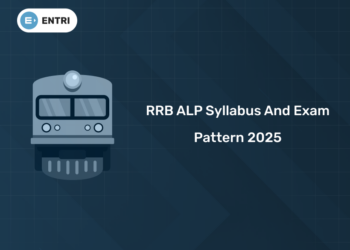Table of Contents
The furious discussions over the ongoing row over the Gyanvapi mosque survey have bought the Places of Worship (Special Provisions) Act, 1991 to the action. The dispute over the mosque located adjacent to the Kashi Vishwanath temple complex in Varanasi is being taken up by the lower court. Earlier this week, AIMIM chief Asaduddin Owaisi had quoted the Places of Worship Act, 1991 and emphasized that Gyanvapi was a mosque and will remain a mosque hereafter.
It is to be noted that the Places of Worship Act, 1991 was passed by the PV Narasimha Rao-led Congress government and forced a positive responsibility on the state to preserve the religious character of every place of worship as it dwelled at the time of independence. With the Gyanvapi mosque case being heard at the Supreme Court and at the lower court, let’s have a look at the Places of Worship Act being talked about in the case.
Grab Latest Study Materials! Register Here!
What is the Places of Worship Act, 1991?
The Places of Worship Act, 1991, bans “conversion of any place of worship” and gives “for the maintenance of the religious character of any place of worship as it existed on the 15th day of August 1947, and for affairs associated therewith or incidental thereto”. According to the Act passed by P.V. Narsimha Rao’s Congress regime during the Ram Mandir movement, the religious nature of a place of worship remains as it was on August 15, 1947.
Attempt Free GK Test! Download Entri App!
Anyhow, the Act has an exception, that is the Babri Masjid controversy. According to Section 3 of the Places of Worship Act, 1991, the transformation of places of worship is prohibited. “No person shall transform any place of worship of any religious sect or any section thereof into a place of worship of another section of the same religious denomination or of another religious denomination or any section thereof,” the Act states.
Attempt Free GK Test! Download Entri App!
Meanwhile, Section 4(1) of the 1991 Act declares, “…the religious character of a place of worship existing on the 15th day of August 1947 shall continue to be the same as it existed on that day.” Furthermore, Section 4(2) of the states, “If, on the commencement of this Act, any suit, appeal or other proceedings with respect to the conversion of the religious character of any place of worship, existing on the 15th day of August 1947, is pending before any court, tribunal or other authority, the same shall abate, and no suit, appeal or other proceedings with respect to any such matter shall lie on or after such commencement in any court, tribunal or other authority.”
Moreover, Section 6 of the Act lets punishing in some cases Section 3 is not followed. “Whoever contravenes the provisions of section 3 shall be punishable with imprisonment for a term which may extend to three years and shall also be liable to fine,” the Act states. Oddly, the word ‘conversion’ applied under Section 3 of the Act has also been defined under section 2(b) of the Act as being “‘conversion’, with its grammatical dissimilarities, comprises alteration or change of whatever nature.” The ones against the Gyanvapi mosque case recorded by the Hindu side, declare that the case is against Section 3 of the Places of Worship Act, 1991.
Grab Latest Study Materials! Register Here!
Supreme Court to resume hearing plea challenging Court-ordered survey on Friday
1: Who was the first woman President of India?
The Supreme Court on Thursday suspended the case concerning to the survey case and said that it will start the matter tomorrow, Friday. The court will hear the appeal of the mosque assembly that is against the survey on May 20 at 3 PM. The Supreme Court also demanded the trial court in Varanasi not to carry on with the Gyanvapi Mosque case till Friday. This came after the Hindu side in the case needed more time from the Supreme Court in the prosecution. The Varanasi court was ready to analyse today the videography survey report given by the team assigned by them.
New Delhi: The current Gyanvapi Masjid dispute has once again put forward to the fore “The Places of Worship Act of 1991” as the dispute strengthens over who and when would get the right to carry out prayers at the disputed site- Gyanvapi mosque complex.
Attempt Free GK Test! Download Entri App!
Subhash Nandan Chaturvedi, an advocate from the Hindu side protested that a ‘Shivling’ has been detected inside a pond in the Gyanvapi mosque complex during the survey, a demand dismissed by the Muslim group. The video survey was assigned by a Varanasi court which, after the accomplishment of the same, asked the Uttar Pradesh government to instantly close the place where the ‘Shivling’ has been found.
The court also told the officials to block people from getting into the area and set up Central Reserve Police Force (CRPF).
Grab Latest Study Materials! Register Here!
Free UPSKILLING Courses!
Take your first step toward mastering in-demand skills, acing interviews, and securing top-tier jobs with Entri's free upskilling courses.
Start Learning!Petition Filed To Seal Mathura’s Shahi Idgah Masjid Adjacent to Krishnajanmabhoomi
On the boundaries of the Kashi Vishwanath Temple-Gyanvapi Mosque study in Varanasi, a local court in Mathura will be hearing a similar appeal asking for videography of the Shahi Idgah Masjid near to Krishnajanmabhoomi. The petition pursues an advocate commissioner for evaluation of the site “on the lines of (the) Gyanvapi mosque” to find out “the presence of Hindu monument and ancient religious inscriptions on the mosque premises”.
Grab Latest Study Materials! Register Here!
AIMIM Chief Asaduddin Owaisi Invokes THE PLACES OF WORSHIP ACT, 1991
After the protests of a ‘Shivaling’ being found in the ‘Wuzu’ area of the Gyanvapi Masjid, All India Majlis-e-Ittehadul Muslimeen (AIMIM) chief Asaduddin Owaisi imposed the ‘Places of Worship’ Act. Asaduddin Owaisi has said that alterations to the Gyanvapi Masjid complex are banned as per the said act. Other leaders, along with the ruling Bharatiya Janata Party (BJP) have said that alterations can be made to the act to benefit the public requirements.
The Places Of Worship Act, 1991
The Places Of Worship Act, 1991 came into action on July 11, 1991. According to the Places of Worship Act, 1991, no one can transform any place of worship of any religious denomination or any section into a place of worship of a different section of the same religious denomination or of a different religious denomination or any section.
However, if any place of worship is disputed, in August 1947, or is pending in court will be exempted from the provisions of this act and no suit shall lie in any court with respect to the conversion of the religious character of a place of worship, as existing on that date.
Attempt Free GK Test! Download Entri App!
Section 4 (1) of the Act states: “The religious character of a place of worship existing on the 15th day of August, 1947 shall continue to be the same as it existed on that day.”
The Act in Section 4 (2) goes on to state that if any suit, appeal, or other proceedings concerning the conversion of the religious traits of any place of worship, existing on August 15, 1947, is pending before any court, tribunal or other authority, the same shall abate, further specifying that no fresh proceedings on such matters shall be started.
Section 3 of the Act bans transformation of a religious place in any manner, even to cater to a particular section of the religion. “No person shall convert any place of worship of any religious denomination or any section thereof into a place of worship of a different section of the same religious denomination or of a different religious denomination or any section thereof,” it reads.
Grab Latest Study Materials! Register Here!
Free UPSKILLING Courses!
Take your first step toward mastering in-demand skills, acing interviews, and securing top-tier jobs with Entri's free upskilling courses.
Start Learning!Exceptions Under The Places Of Worship Act, 1991
The Places Of Worship Act, 1991 particularly exempted the Ramjanmabhoomi-Babri Masjid case from the Act. Therefore it was not considered during the Supreme Court’s judgement back in 2019. It also exempts any places of worship that accredited as ancient and historical monuments, archaeological sites, or remains deposited under the Ancient Monuments and Archaeological Sites and Remains Act of 1958.
Why Was The Places Of Worship Act, 1991 Introduced?
The Act came into existence by a Bill established by Shankarrao Chavan, the Union Home Minister in the PV Narasimha Rao Cabinet when BJP leader LK Advani began a Pan-India Rath Yatra to claim the land in Ayodhya, Uttar Pradesh over which the Babri Masjid was constructed, which many Hindu outfits and the BJP protested was the place where Lord Ram was born. It came to be known as the Ramjanmabhoomi-Babri Masjid dispute and later on led to the destruction of the Babri Masjid structure on 6 December 1992.
Following the arrest of Advani in Bihar and the killing of kar sevaks in Uttar Pradesh, commanded by the Mulayam Singh government, Chavan wanted to stop occurance of communal unrest through the Bill.
Attempt Free GK Test! Download Entri App!
Challenge To The Places Of Worship Act, 1991
BJP leader and lawyer Ashwini Kumar Upadhyay challenged the Places of Worship Act, 1991 in 2021 in the Supreme Court. He said that the law was a violation of the principle of secularism as declared by the Constitution of India.
“The Centre has barred remedies against illegal encroachment on places of worship and pilgrimages and now Hindus, Jains, Buddhists, Sikhs cannot file a suit or approach a high court under Article 226. Therefore, they won’t be able to restore their places of worship and pilgrimage including temple endowments in the spirit of Articles 25-26 and the illegal barbarian acts of invaders will continue in perpetuity,” Upadhyay’s petition read.
Upadhyay’s appeal existed to a legal battle before a trial court over “reclaiming the birthplace of Lord Krishna in Mathura”, which was directly affected by the restrictions under the 1991 Act.
The main aim is to the irrational cut off date of August 15, 1947 for determining the religious nature of a place. Petitioners also claim the Act blocks judicial review and is thus unlawful.
Grab Latest Study Materials! Register Here!
What Supreme Court Said About Places of Worship Act in Ayodhya Verdict
The five-judge bench led by then Chief Justice of India Ranjan Gogoi had admired the Places of Worship Act in its 2019 Ayodhya judgment as “a legislative instrument designed to protect the secular features of the Indian polity, which is one of the basic features of the Constitution”.
I hope this article was helpful. The key point to clear an exam lies in methodical and planned preparation. If you are a candidate who wants to pursue your dream career and looking for a good start, our Entri app has got it covered for you. Our team will help you with content and insights related to the topics of your concern. Subscribe to our app today and enrol yourself into various programmes our app offers. Tune in to the app to stay updated regarding various aspects of the subject you are interested in. Feel free to post any queries and doubts in the comment section. We will try our best to reach out. Push away all those self-doubts and negative thoughts. Try to have a clear vision. Ask yourself why you want this. Focus on the good and work hard.












